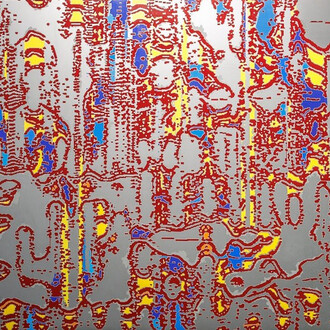Erarta Museum's Dreaming Without Freud exhibition is an artistic rather than a psychoanalytic endeavour. Dreams interest us as a visual phenomenon and not as a criterion for establishing diagnosis or consulting a certified therapist.
The exhibits do not present an illustrated anthology of Freudism. The emphasis is not on interpreting dreams, but on the poetic substance of dreaming itself, on the highly expressive images filtering in from our parallel lives beyond the control of our daylight reasoning powers.
Every day, in average, a person spends eight hours working, and eight more hours dreaming. Sometimes we dream long, serial dreams, spanning over many years, featuring recurrent characters and overlapping plots, weaving an alternative life story. More often, however, our dreams are one-time affairs: unpredictable, magical, disturbing, inducing a state of panic or erotic excitement, full of paradox. A dreamer easily moves through time and space, flies, swims, loves, travels, wins, fears, enters other worlds and meets those long departed. The range of themes and images for Dreaming Without Freud could be seemingly endless, were it not for the obvious limitations of space.
The exhibition showcases the artists successfully communicating the bizarre reality of dreams to the fullest extent possible. The artworks by such established masters as Maxim Kantor (Île de Ré/Oxford), Elena Figurina (St. Petersburg), and Igor Tishin (Brussels/St. Petersburg) are displayed side by side with the creations of emerging young artists — Aleksey Slon (St. Petersburg), Ivan Korshunov (Moscow), Andrey Novikov (Mineralnye Vody). The overall tone is set by the ‘middle’ generation of artists currently prominent in the St. Petersburg art scene: Andrey Rudyev, Viktor Remishevsky, Inna Grinchel, Nadezhda Anfalova, Alexander Kosenkov, Dmitry Loktionov, Yulia Sopina, Elena and Igor Kuliks, and Natalya Shalina.
The exhibition can be tentatively divided into several areas by theme and mood. At the entrance the viewer is greeted by Natalia Rumyantseva's spectacular dreams of flying scuba divers, Nadezhda Anfalova's romanticism, and the joyfully ironic works by Dmitry Loktionov. A transition is then made into the monochrome painting zone — the realm of mournful unconcern, anxiety, homelessness, threat and chthonic horror evident in the artworks by Alla Davydova, Andrey Novikov, and Andrey Rudyev.
The second room opens with the moving, associative Dream. This painting, created by the Novosibirsk-based artist Vladimir Fateyev, might as well serve as the visual emblem of the entire exhibition. Part of the space, devoted to the emptiness, silence and numbness of a non-narrative dream, is dominated by Viktor Remishevsky's installation and the quiet art objects by Inna Grinchel.
The rest of the room is invaded by the cheerful frenzy of themes and the unconstrained picturesque manner of Alexander Kosenkov, as well as the perfectionism of Ivan Korshunov and Damir Krivenko. Korshunov's utterly crazy visionary work entitled Rain, simultaneously featuring falling comets, doomsday and kittens, neatly wraps the epic and the kitsch, humour and eschatology into a single postmodernist package. Damir Krivenko's perfectionist chimeras present the visions of posthuman beings — a gamer and a hacker, the heroes and driving forces of the brand new state of online daydreaming. This new state apparently blurs the borders of reality, confusing and interchanging the sleep-wake (and dream) patterns.
















